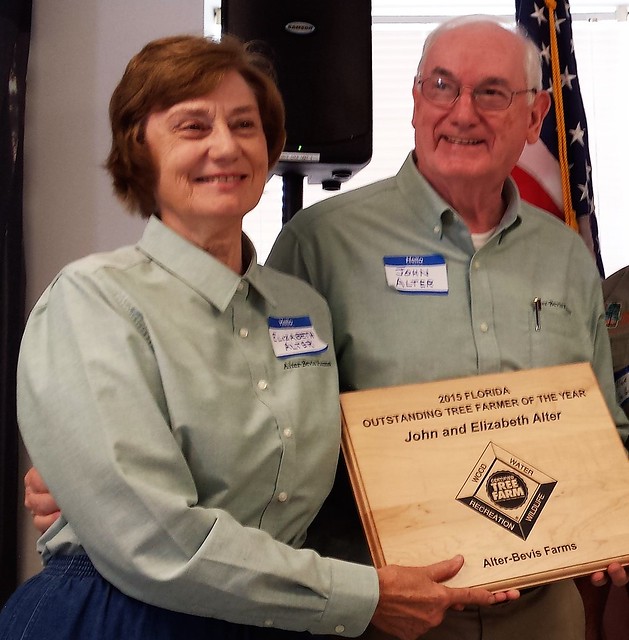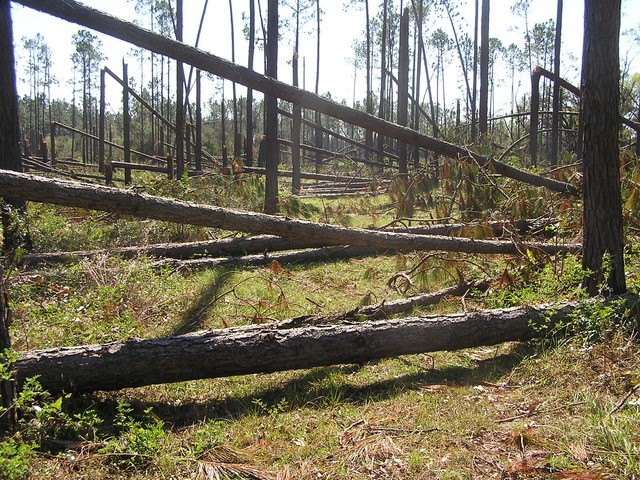
Hurricane Michael, which roared through Florida, Alabama and Georgia on October 10, hit timberland owners and timber markets hard.
John Alter and his wife Elizabeth manage more than 1,000 acres in Malone, Florida, including 18 Tree Farm stands. The Alters were honored as Florida’s Outstanding Tree Farmers of the Year in 2015.
“This is a true disaster,” said Alter. “My immediate focus is on determining what to do with what’s left of my timber, and I do not have access to everything right now.”

The monetary estimate of timber damage in Florida alone is well over $1 billion. The hurricane also caused extensive damage in Georgia and Alabama.
Research shows that damage from individual storms and other forest threats, such as insects, fire, and disease, can create widespread wealth redistribution among timber land owners. The entire supply chain is impacted – from landowners to loggers to the mills and beyond. Southern Research Station Forest Economics and Policy researchers Thomas Holmes and Jeff Prestemon’s studies show that growers with damaged stands lose wealth.
“Prices fall during the salvage period due to the spike in volume and quality degradation,” said Holmes. “Plus, not all damaged timber can be salvaged.”
Timber growers with damaged stands and timber consumers – mills – tend to lose out, he explained. However, timber producers with undamaged stands benefit because wood is still needed, and prices can rise to make up for the lack of high-quality wood available after salvage operations. He predicts that, based on a timber market welfare analysis, the aggregate losses to timber producers and consumers in Florida from Hurricane Michael may exceed the current $1 billion estimate.
In the past, state governments have taken steps to assist timber managers with salvage operations. Some examples include relaxing weight limits on roads; allowing logging trucks to carry heavier loads; permitting larger than normal log storage volumes at mills; and assisting private landowners and nongovernmental organizations with salvage planning.
“It would take 2.4 million logging trucks to remove all of the dead trees that we have in Florida as a result of this hurricane,” said Florida Forest Service State Forester/Director Jim Karels.
The Forest Service is supporting restoration efforts by working closely with state foresters in Florida and Georgia to increase timber sale and salvage operations. At the states’ request, agency specialists will also provide technical assistance to help private landowners write plans for treatments and get their timber to market. The Forest Service will also provide funding to state forestry agencies to administer landowner reforestation programs.
“Active cooperation between state and federal agencies will be the key to recovery,” said Rob Doudrick, SRS Director. “Our research will provide the sound science for making decisions.”

